Biology is the scientific study of life and living organisms, exploring their structure, function, growth, and evolution․ It helps us understand the natural world and our place within it․
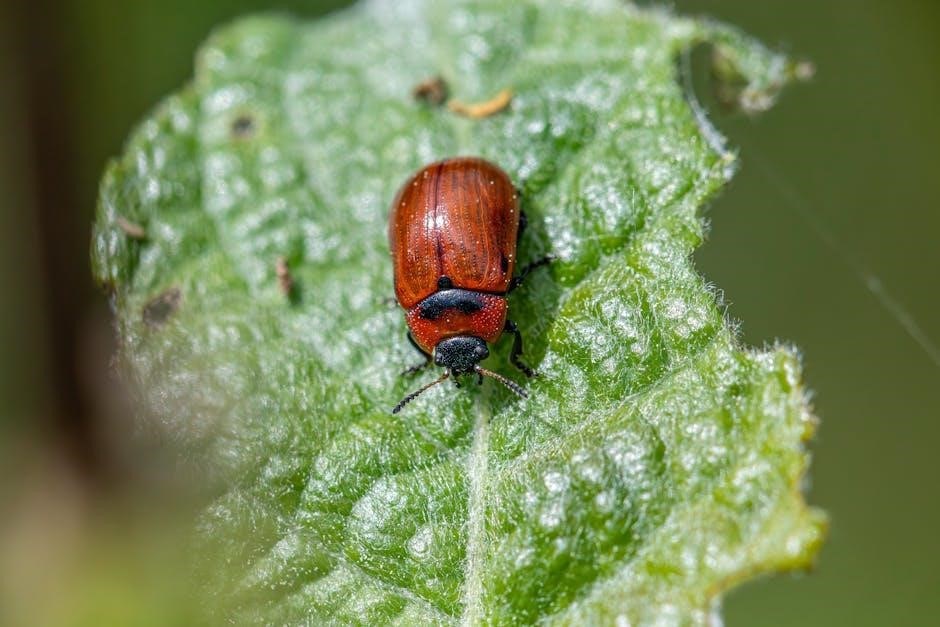
1․1 Importance of Studying Biology
Studying biology is essential for understanding the fundamentals of life and the natural world․ It provides insights into the structure, function, and diversity of living organisms, from cells to ecosystems․ Biology helps address global challenges such as disease prevention, environmental conservation, and food security․ By studying biology, we gain the knowledge to improve human health, develop sustainable practices, and harness biotechnology for innovation․ It also fosters critical thinking, scientific literacy, and problem-solving skills, preparing individuals for careers in medicine, research, and ecology․ Understanding biology empowers us to make informed decisions about our health, environment, and the ethical use of technology․ Ultimately, biology connects us to the world around us, promoting a deeper appreciation for life and our role within it․
1․2 The Scientific Method in Biology
The scientific method is a systematic process used in biology to explore and understand the natural world․ It begins with observation, where biologists make careful notes about phenomena or patterns in nature․ This leads to the formation of a question or hypothesis, which is then tested through controlled experiments or data collection․ The results are analyzed to determine whether they support or reject the hypothesis․ If the hypothesis is supported, it may lead to the development of a theory, which explains the observed phenomena․ The scientific method ensures objectivity, reproducibility, and logical reasoning in biological research․ By following this method, biologists can uncover the mechanisms underlying life processes, from molecular interactions to ecosystem dynamics․ This approach has been instrumental in advancing our understanding of biology and addressing complex scientific challenges․
1․3 Branches of Biology
Biology encompasses various branches, each focusing on different aspects of life and living organisms․ Botany studies plants, exploring their structure, growth, and reproduction․ Zoology delves into the biology of animals, examining their behavior, physiology, and evolution․ Ecology investigates the interactions between organisms and their environments, emphasizing biodiversity and ecosystem balance; Genetics focuses on heredity, DNA, and gene expression, while microbiology explores the world of microorganisms, including bacteria, viruses, and fungi․ Additionally, anatomy and physiology examine the structure and function of body systems in plants and animals․ These diverse branches collectively contribute to a comprehensive understanding of life, allowing biologists to address complex questions and challenges in fields ranging from medicine to conservation․ Each branch builds upon the others, creating a unified framework for exploring the intricacies of life on Earth․
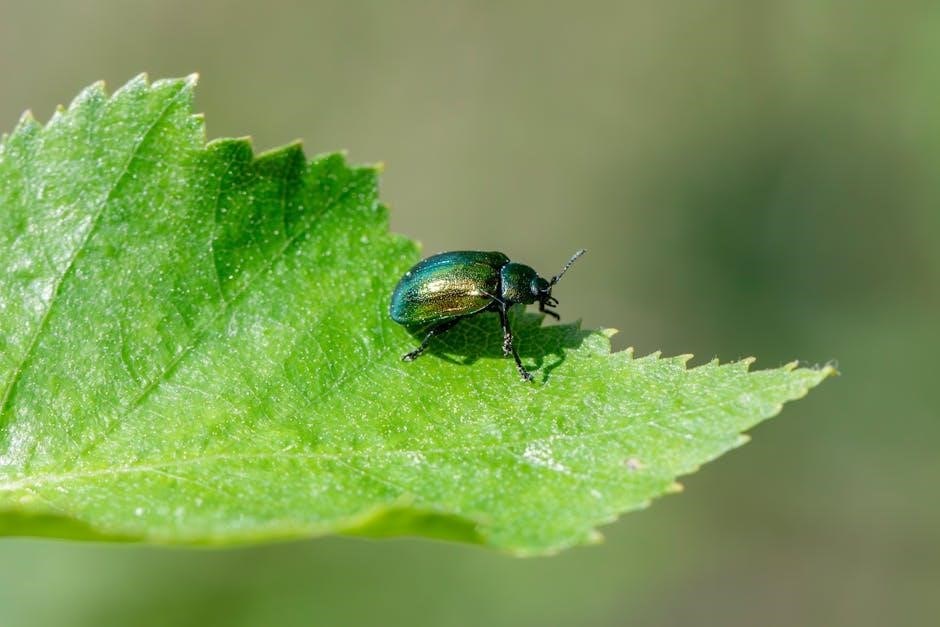
The Structure and Function of Cells
Cells are the basic structural and functional units of life, consisting of a cell membrane, cytoplasm, and organelles like the nucleus, mitochondria, and ribosomes, each performing unique roles․
2․1 Cell Membrane and Transport
The cell membrane, a semi-permeable phospholipid bilayer, regulates the movement of materials in and out of the cell․ It maintains cellular homeostasis by controlling the passage of ions, nutrients, and waste products․
Transport mechanisms include passive transport (e․g․, diffusion, osmosis) and active transport․ Passive transport relies on concentration gradients, while active transport requires energy, often involving carrier proteins․ Vesicular transport moves larger molecules across the membrane․
Understanding membrane structure and transport is crucial for explaining cellular functions, such as nutrient uptake, waste removal, and signaling․ These processes are essential for maintaining life and enabling cells to respond to their environment effectively․
2․2 Cell Organelles
Cell organelles are specialized structures within cells that perform specific functions essential for cellular survival and activity․ The nucleus acts as the control center, storing genetic information and regulating gene expression․ Mitochondria generate energy through cellular respiration, producing ATP․ The endoplasmic reticulum (ER) synthesizes proteins and lipids, with the rough ER having ribosomes for protein assembly and the smooth ER handling lipid production․ Ribosomes, found throughout the cytoplasm, are responsible for protein synthesis․ Lysosomes contain digestive enzymes that break down waste and cellular debris․ The Golgi apparatus modifies, sorts, and packages proteins and lipids for transport․ Each organelle works together to maintain cellular homeostasis and ensure proper function, highlighting the complexity and efficiency of cellular organization․
2․3 Cell Division and the Cell Cycle
Cell division and the cell cycle are essential processes for growth, repair, and reproduction in organisms․ The cell cycle consists of four main phases: G1 (gap 1), S (synthesis), G2 (gap 2), and M (mitosis)․ During interphase (G1, S, and G2), the cell grows, replicates its DNA, and prepares for division․ Mitosis, the M phase, involves the division of the cell nucleus into two identical nuclei․ This is followed by cytokinesis, where the cytoplasm divides, forming two daughter cells․ There are two types of cell division: mitosis, which produces genetically identical diploid cells, and meiosis, which produces haploid gametes for sexual reproduction․ Errors in cell division can lead to uncontrolled cell growth, potentially causing cancer․ Understanding the cell cycle is crucial for studying development, disease, and the mechanisms of life;
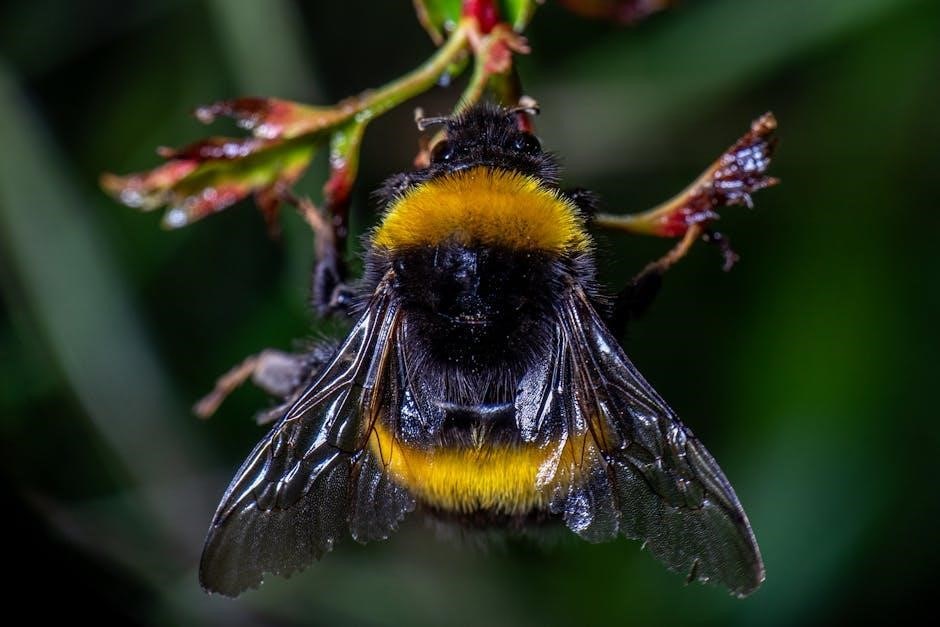
Genetics and Heredity
Genetics and heredity explore how traits are inherited through the transmission of genes․ DNA contains the genetic code, determining characteristics passed from parents to offspring, shaping diversity and evolution․
3․1 Mendelian Genetics
Mendelian genetics, established by Gregor Mendel, is the foundation of heredity studies․ It introduces laws of segregation, independent assortment, and dominance, explaining how genes transmit traits․ Mendel’s experiments with pea plants revealed predictable inheritance patterns, such as dominant and recessive traits․ His findings showed that genes separate during reproduction, and different traits are inherited independently․ These principles form the basis of modern genetics, aiding in understanding genetic disorders and plant breeding․ Mendel’s work demonstrated that genetic inheritance follows statistical rules, paving the way for advancements in biotechnology and personalized medicine․ His discoveries remain essential for studying hereditary patterns and genetic diversity in organisms․ Mendelian genetics provides a clear framework for predicting trait transmission, making it a cornerstone of biology and genetics education․
3․2 DNA Structure and Replication
DNA (deoxyribonucleic acid) is a double-stranded helix composed of nucleotides, each containing a sugar, phosphate, and nitrogenous base․ The sequence of these bases determines genetic information․ Adenine pairs with thymine, and guanine pairs with cytosine, forming the genetic code․ DNA replication is semi-conservative, meaning each new strand is synthesized from an original template․ This process ensures genetic continuity across generations․ Enzymes like helicase unwind DNA, and DNA polymerase synthesizes new strands․ Replication occurs during cell division, allowing cells to pass identical genetic material․ Understanding DNA structure and replication is crucial for genetics, biotechnology, and medical advancements, as it explains how life perpetuates and evolves․
3․3 Gene Expression
Gene expression is the process by which genetic information encoded in DNA is converted into functional products, such as proteins, that affect an organism’s traits․ It involves transcription, where DNA is copied into mRNA, and translation, where mRNA is decoded to build proteins․ Regulation of gene expression ensures genes are active only when needed, influenced by factors like epigenetic modifications and environmental cues․ For example, DNA methylation can silence genes, while specific proteins bind to DNA to enhance transcription․ Understanding gene expression is vital for studying evolution, development, and disease mechanisms, as it explains how genetic potential becomes observable traits․ Dysregulation of gene expression can lead to conditions like cancer, highlighting its importance in medical research and personalized medicine․

Evolution and Natural Selection
Evolution explains how species change over generations through genetic variation and environmental pressures․ Natural selection drives this process, favoring traits that enhance survival and reproduction, shaping biodiversity and adaptation․
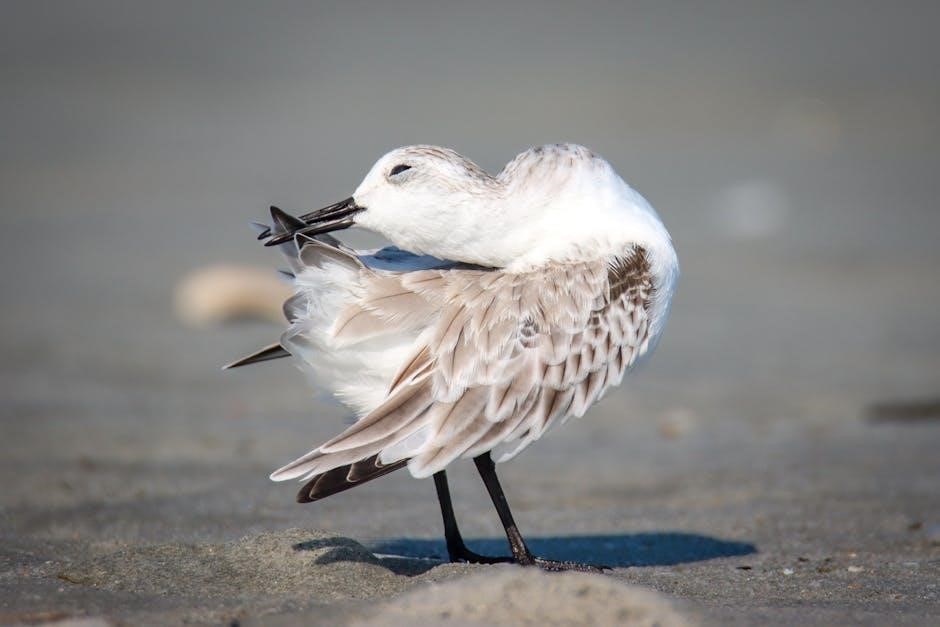
4․1 Mechanisms of Evolution
Evolution is driven by several key mechanisms that shape the diversity of life․ Natural selection acts on genetic variation, favoring traits that enhance survival and reproduction․ Genetic drift introduces random changes in allele frequencies, often influencing small populations; Mutation provides new genetic material, while gene flow transfers genes between populations, maintaining genetic diversity․ Sexual selection further influences evolution by favoring traits that attract mates․ These mechanisms interact, creating complex pathways for species adaptation and change over generations․ Together, they explain how life evolves, adapts, and diversifies in response to environmental pressures and genetic opportunities․
4․2 Evidence for Evolution
The evidence for evolution is vast and comes from multiple fields of study․ Fossil records reveal the history of life, showing transitional forms and gradual changes over time․ Comparative anatomy highlights similarities and homologies, such as vestigial structures, indicating shared ancestry․ Biogeography explains species distribution patterns consistent with evolutionary history․ Molecular biology confirms evolutionary relationships through DNA and protein sequence similarities․ Observations of evolutionary changes in laboratory and natural settings further support the theory․ Additionally, the study of embryology shows developmental similarities among diverse species․ Together, these lines of evidence—fossil, anatomical, geographical, molecular, and observational—provide a robust framework for understanding evolution as a well-supported scientific theory․
4․3 Speciation and Phylogeny
Speciation is the process by which new species emerge, often due to reproductive isolation․ This can occur through mechanisms like allopatric speciation, where geographic barriers separate populations, or sympatric speciation, where divergence happens within the same environment․ Phylogeny refers to the study of evolutionary relationships among organisms, often depicted as branching trees․ Molecular data, such as DNA sequences, and morphological traits are used to reconstruct these relationships․ Understanding phylogeny helps trace how species have diverged over time, forming distinct lineages․ Together, speciation and phylogeny explain biodiversity and the interconnectedness of life on Earth, providing insights into how species adapt and evolve in response to environmental pressures and genetic changes;
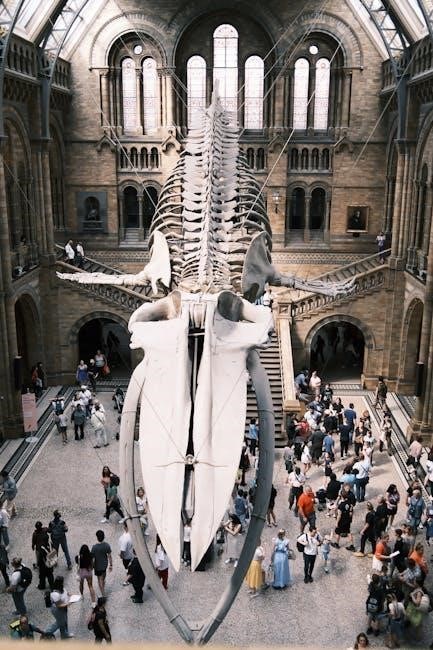
Ecosystems and Ecology
Ecosystems and ecology study the interactions between organisms and their environment, focusing on energy flow, nutrient cycles, and biomes, while addressing biodiversity and human impact on natural systems․
5․1 Energy Flow and Nutrient Cycles
Energy flow and nutrient cycles are essential processes in ecosystems, describing how energy and materials move through the environment․ Energy flows from producers (like plants) to consumers (like animals) in a food chain or web, with only 10% of energy transferring between trophic levels․ Nutrient cycles, such as carbon, nitrogen, and phosphorus cycles, involve the movement of nutrients between biotic and abiotic components․ These cycles sustain life by recycling nutrients back to producers, ensuring their availability for future generations․ Decomposition plays a critical role in releasing nutrients, while human activities, like agriculture, can disrupt these cycles, leading to environmental challenges․ Understanding these processes is vital for managing ecosystems and addressing issues like climate change and nutrient depletion․
- Energy flow is unidirectional and diminishes at each level․
- Nutrient cycles are circular, ensuring resource renewal․
- Human impact can alter natural cycles, affecting biodiversity and ecosystem health․
5․2 Biomes and Biodiversity
Biomes are large, naturally occurring communities of plants and animals that occupy specific habitats․ Examples include forests, deserts, and oceans․ Biodiversity refers to the variety of life within these ecosystems, encompassing genetic, species, and ecosystem diversity․ It is crucial for maintaining ecological balance and providing essential services like clean air and water․ Human activities, such as deforestation and pollution, threaten biomes and reduce biodiversity, leading to ecosystem instability․ Conservation efforts focus on protecting these regions to preserve their unique flora and fauna, ensuring the survival of complex interactions within biomes․
- Biomes are distinct ecological communities shaped by climate and geography․
- Biodiversity ensures resilience and functionality of ecosystems․
- Human impact often disrupts biomes, requiring sustainable management․
5․3 Human Impact on Ecosystems
Human activities significantly alter ecosystems, often leading to environmental degradation․ Deforestation, pollution, and climate change disrupt natural habitats, reducing biodiversity․ Overexploitation of resources depletes ecosystems, threatening species survival․ Urbanization and agriculture further strain ecosystems, causing loss of native species and ecosystem services․ Conservation efforts, such as sustainable practices and protected areas, aim to mitigate these impacts․ Understanding human effects on ecosystems is crucial for developing solutions to preserve ecological balance and ensure a sustainable future․
- Deforestation and pollution harm ecosystems and biodiversity․
- Climate change alters habitats and disrupts species interactions․
- Sustainable practices are essential to mitigate human impact․
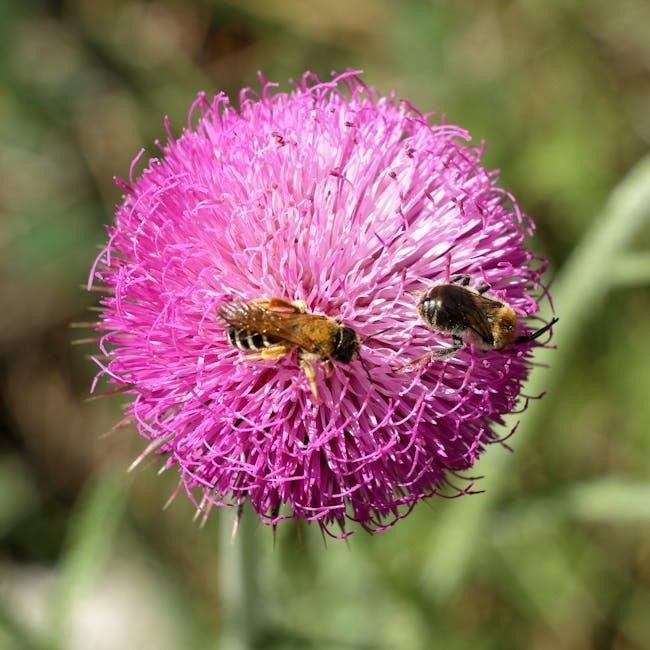
Human Biology and Physiology
Human biology explores the structure and function of the human body, focusing on systems like the nervous, circulatory, and immune systems․ Physiology explains how these systems maintain health and respond to changes․
6․1 The Nervous System
The nervous system is a complex network of specialized cells and tissues that coordinates and controls bodily functions․ It consists of the central nervous system (CNS), including the brain and spinal cord, and the peripheral nervous system (PNS), which connects the CNS to the rest of the body․ The nervous system enables communication through electrical and chemical signals, allowing for voluntary actions, such as movement, and involuntary responses, like reflexes․ Sensory neurons detect stimuli, while motor neurons execute responses․ The nervous system also plays a critical role in cognition, emotion, and memory․ Understanding its structure and function is essential for appreciating human physiology and addressing neurological disorders․ This system is vital for maintaining homeostasis and enabling interaction with the environment․
6․2 The Circulatory System
The circulatory system, also known as the cardiovascular system, is a vital network responsible for transporting essential substances throughout the body․ It consists of the heart, blood vessels, and blood, functioning to deliver oxygen and nutrients to cells while removing waste products․ The heart acts as a pump, propelling blood through arteries, veins, and capillaries․ Arteries carry oxygen-rich blood away from the heart, while veins return oxygen-depleted blood․ Capillaries facilitate the exchange of substances between blood and tissues․ Blood itself is composed of red blood cells, which transport oxygen; white blood cells, which fight infections; and plasma, the liquid medium that carries nutrients and hormones․ The circulatory system plays a crucial role in maintaining homeostasis and supporting immune function․ Understanding its structure and processes is key to addressing conditions like cardiovascular diseases, which are among the leading causes of global mortality․ A healthy circulatory system is essential for overall well-being and longevity․
6․3 The Immune System
The immune system is a complex defense mechanism that protects the body against pathogens, such as bacteria, viruses, and other foreign substances; It consists of two main subdivisions: the innate immune system, which provides immediate, non-specific defense, and the adaptive immune system, which offers specific, long-lasting protection․ Key components include white blood cells (e․g․, T cells and B cells), lymph organs, and chemical defenses like antibodies․ The immune system identifies and neutralizes threats through processes like phagocytosis, inflammation, and antigen-antibody interactions․ It plays a vital role in maintaining health by preventing infections and diseases․ Understanding the immune system is crucial for addressing immunodeficiencies, autoimmune disorders, and developing vaccines․ A strong immune response is essential for overall well-being and survival, making it one of the most critical biological systems in the human body․

Molecular Biology
Molecular biology examines the structure, function, and interactions of biological molecules like DNA, proteins, and enzymes․ It uncovers how genes are expressed and regulate life processes, enabling advancements in biotechnology and medicine․
7․1 Proteins and Enzymes
Proteins are complex molecules essential for nearly all cellular functions, serving as structural components, enzymes, and signaling molecules․ Enzymes, a specific type of protein, act as catalysts, accelerating biochemical reactions․ They lower activation energy, enabling reactions to occur efficiently under mild conditions․ Each enzyme binds to a specific substrate through its active site, ensuring precise catalysis․ Without enzymes, life as we know it would not exist․ Their role in metabolism, DNA replication, and signal transduction underscores their importance․ Understanding proteins and enzymes is crucial for advancing fields like medicine and biotechnology, where enzyme inhibitors or supplements can treat diseases and enhance industrial processes․
7․2 Biotechnology Applications
Biotechnology leverages biological systems and organisms to develop innovative products and solutions․ Key applications include genetic engineering, where genes are modified to enhance traits in crops, animals, and microbes․ This technology improves agricultural productivity, creating pest-resistant crops and increasing food security․ In medicine, biotechnology produces life-saving drugs, vaccines, and antibodies, such as insulin, revolutionizing healthcare․ Environmental applications involve bioremediation, using organisms to clean pollutants, and biofuels, offering sustainable energy alternatives․ Forensic biotechnology aids in DNA profiling for criminal investigations․ Additionally, synthetic biology designs new biological pathways for producing biofuels and chemicals․ These advancements highlight biotechnology’s transformative potential across industries, addressing global challenges and improving quality of life․

Practical Applications of Biology
Biology solves real-world problems, advancing medicine, agriculture, and conservation․ It informs vaccine development, genetic engineering, and environmental sustainability, improving human life and ecosystem health globally․
8․1 Careers in Biology
Careers in biology are diverse and rewarding, offering opportunities in research, healthcare, education, and conservation․ Biologists work in laboratories, hospitals, universities, and outdoor settings, contributing to scientific advancements and solving real-world problems․ Common roles include geneticists, conservation biologists, microbiologists, and science teachers․ Biomedical engineers apply biological principles to develop medical technologies, while ecologists focus on environmental sustainability․ Zoologists and wildlife managers work with animals to preserve biodiversity․ Additionally, biotechnologists develop innovative products in agriculture and medicine․ These careers require a strong foundation in biological concepts, analytical thinking, and problem-solving skills․ Biologists play a crucial role in addressing global challenges, such as disease prevention, food security, and climate change․ Pursuing a career in biology allows individuals to make meaningful contributions to society while exploring their passion for life sciences․
8․2 Biology in Everyday Life
Biology plays a vital role in everyday life, influencing decisions in medicine, agriculture, and environmental conservation․ Understanding biological principles helps individuals make informed choices about health, nutrition, and sustainability․ For instance, knowledge of genetics can guide decisions about disease prevention and personalized medicine․ In agriculture, biological concepts improve crop yields and pest management, ensuring food security․ Additionally, biology informs strategies for conservation and combating climate change, such as renewable energy sources and biodiversity preservation․ Everyday applications also include personal health, where biological knowledge aids in maintaining fitness and understanding the benefits of vaccines․ By applying biological principles, individuals can contribute to a healthier planet and improved quality of life․ Biology’s practical relevance underscores its importance in addressing global challenges and enhancing daily living․
